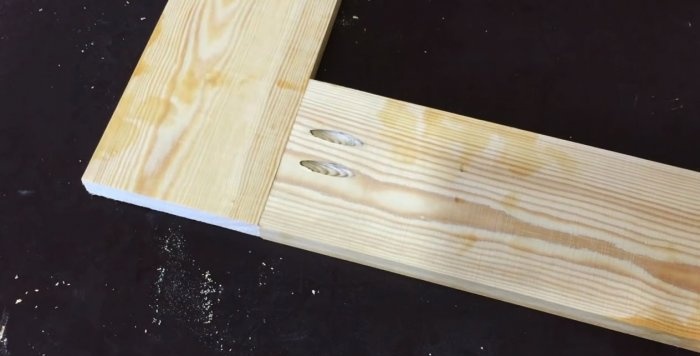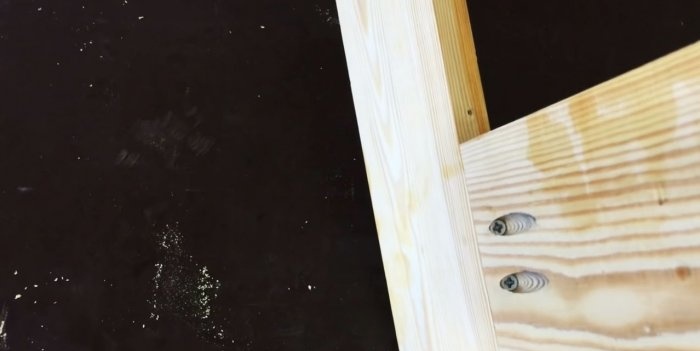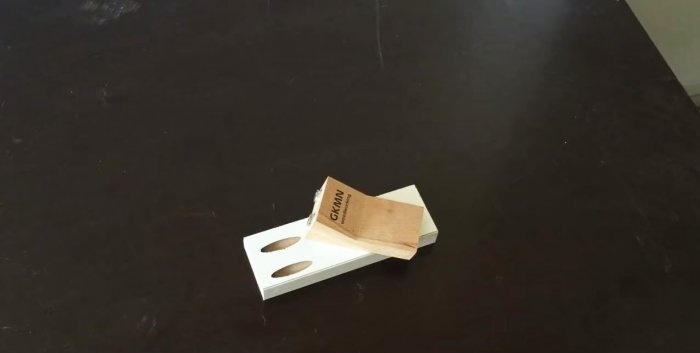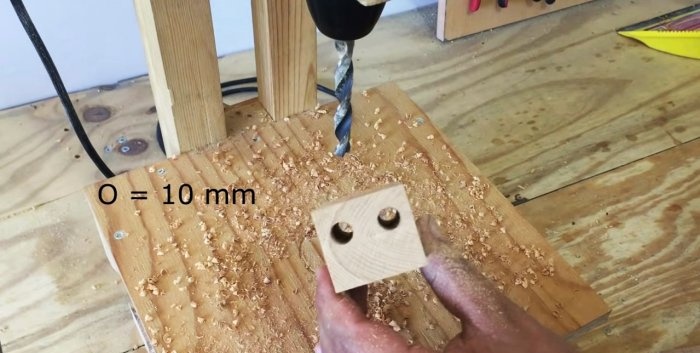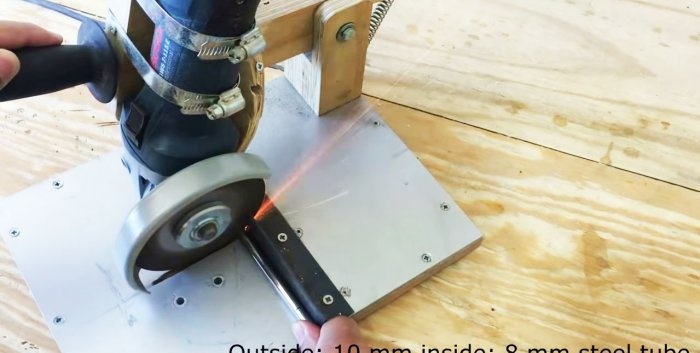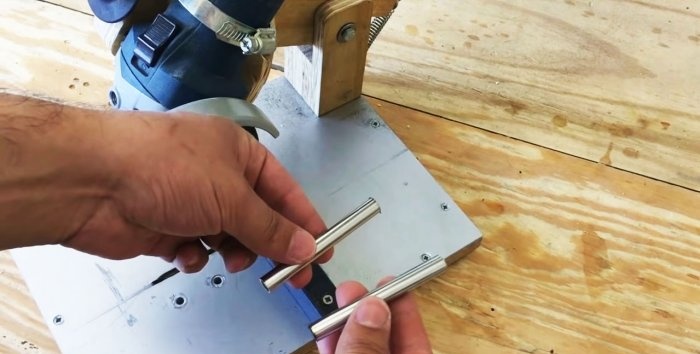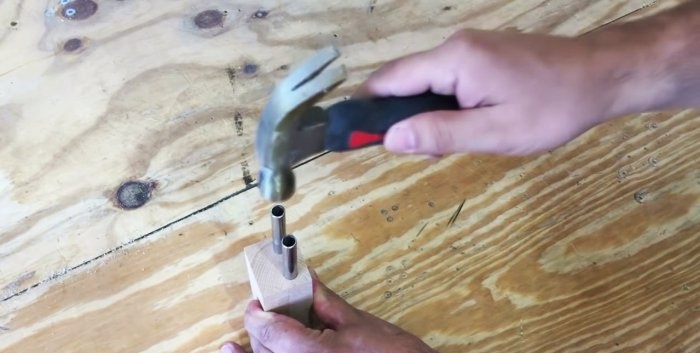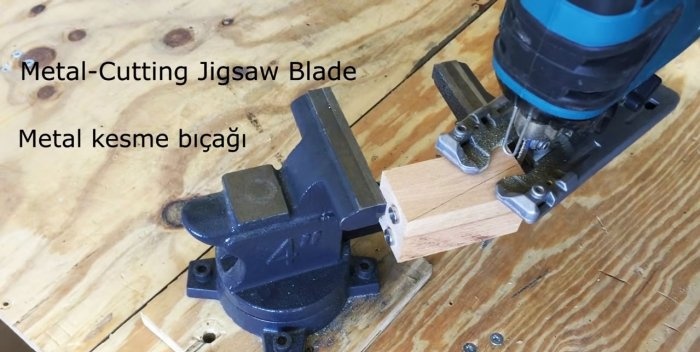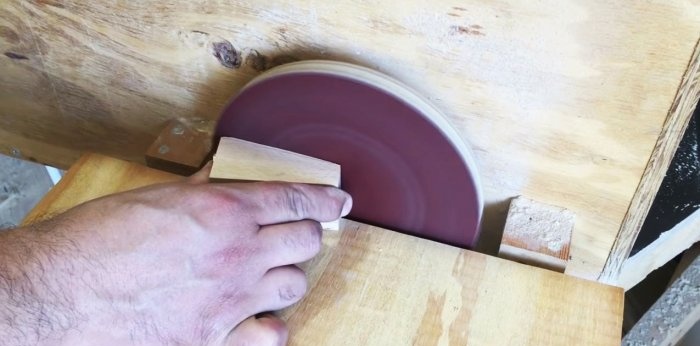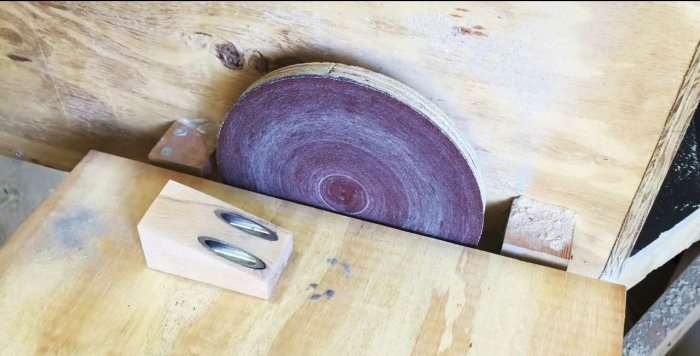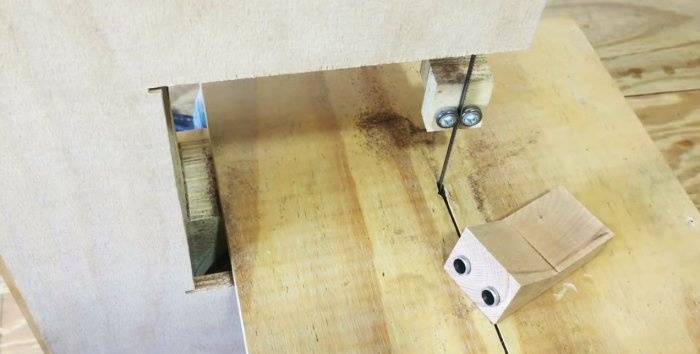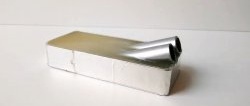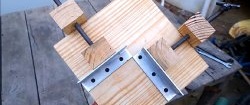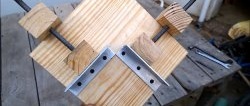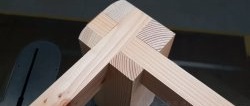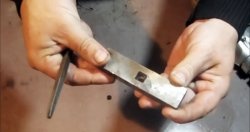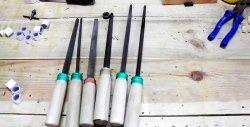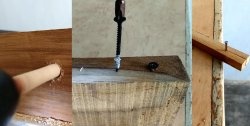The splicing method is far from new, but the device that we will consider today for it is simple, reliable and, most importantly, you can make it yourself. It will save you from the unnecessary hassle of aiming drills of different calibers at precise angles, which is extremely difficult to do by hand. So let's get started!
Materials, tools
- Wooden block in cross section – 4.5 cm * 4 cm, length – 8 cm;
- Steel tube with an internal diameter of 8 mm and an external diameter of 10 mm.
The following power tools will be useful to us:
- A tabletop drilling machine with a drill for holes in the jig (a drill or screwdriver will also work);
- Jigsaw;
- Grinding machine;
- Band-saw;
- Grinder (angle grinder).
The following hand tools will be useful: a vice, clamps, a quadrant protractor or protractor, sandpaper and a tape measure with a pencil.
Making a jig for oblique holes
It is necessary to make several through working holes in the blank bar. This can be done on a stationary drilling machine or with a drill. The diameter of the holes is selected to match the outer diameter of the tubes that will pass through these holes.
Next, we prepare the metal guide tubes. They are needed to prevent the drill from flaring holes in soft wood. We cut them with a grinder according to the height of the bar with a margin of 5 mm.
We hammer the tubes until they stop. If the holes are weakened, the outside of the tubes can be treated with the same grinder cutting wheel (angle grinder) or placed on glue.
We mark the plane line of our conductor. The tilt angle is 15o. For marking, it is convenient to use an inexpensive quadrant protractor.
We clamp the block in a vice and cut it along the marked line with a jigsaw. For this purpose, it is worth choosing a universal blade, with a fine tooth, designed for cutting wood and metal.
The plane of the jig after cutting is far from ideal. We align it on a grinding machine so that the side edges of the block remain perpendicular to it.
If we leave our template at this stage, then pressing it to the workpiece with a clamp will be problematic. This is all due to the inclined plane that formed on the outside of the block after cutting it. To avoid this, you need to work it by making a zone for the heel of the clamp. The cut should be slightly concave so that the line of its front part, defined for the clamp, becomes parallel to the bottom plane of the template. After cutting on a band saw or jigsaw, the jig can be lightly sanded with sandpaper.
All that remains is to check the functionality of the conductor by pressing it against the workpiece on the work table with a clamp. Self-tapping screws for such connections are used exclusively with a flat head, which prevents the wood from cracking when joining two parts. For drilling holes for them, a two-stage Twist drill is ideal, with an initial diameter of 4-5 mm and a final diameter of 8 mm. You will also need a long bit to tighten the screws. That's all, good luck everyone!
